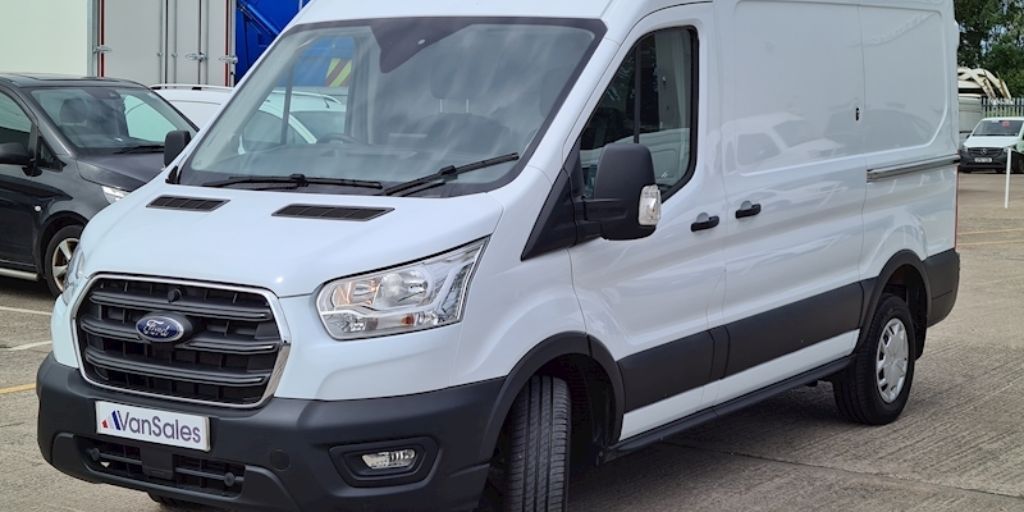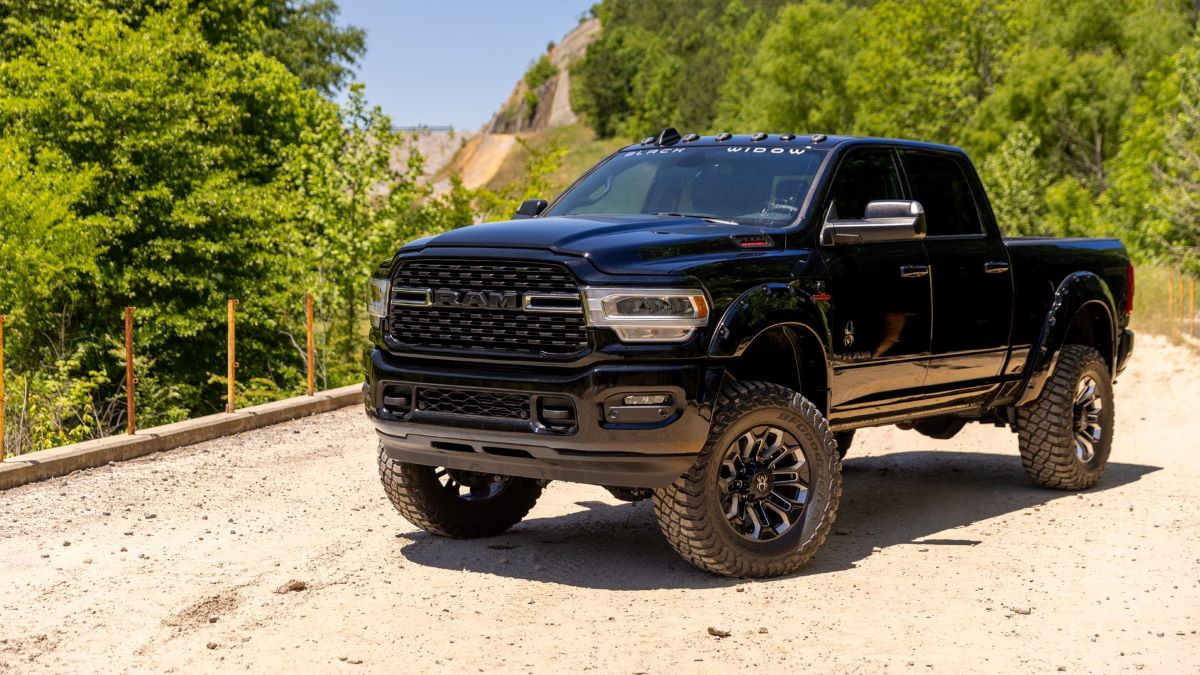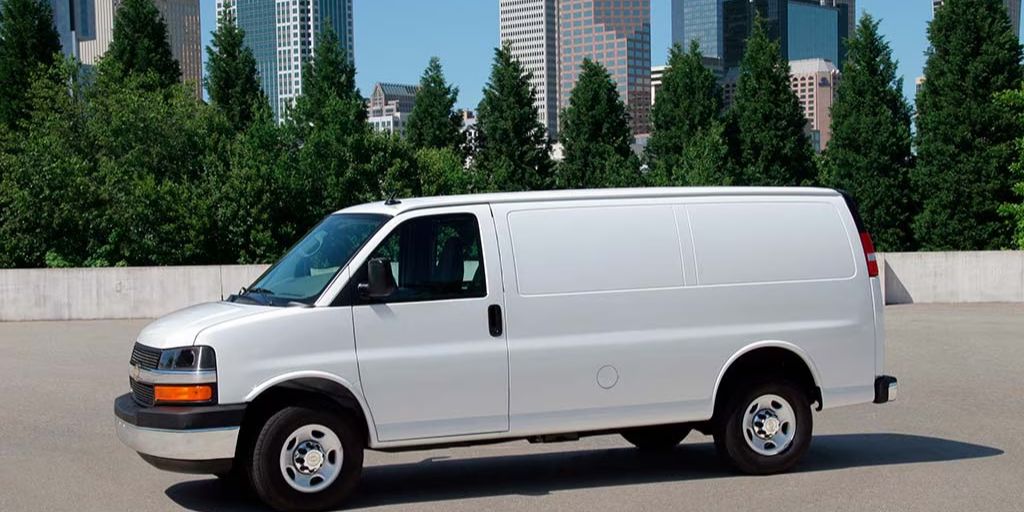When the general public thinks about prison systems, their minds often go to the walls, cells, guards, and perhaps rehabilitation programs. Rarely do they consider one of the most crucial aspects of the system’s operations: transportation.
Behind the scenes, fleets of vehicles are responsible for moving inmates between facilities, transporting staff, delivering supplies, and responding to emergencies.
These vehicles are not ordinary; they are tailored to meet strict security, durability, and performance requirements. At the heart of these demands lies a critical decision-making process — the selection of reliable vehicles and powertrains.
For correctional departments, choosing the right vehicles isn’t just about horsepower or fuel economy. It’s about ensuring that a vehicle can withstand frequent use, long idling times, harsh weather conditions, and high-security risks.
They must be easy to maintain, built to endure wear and tear, and powerful enough to handle heavy payloads, such as reinforced cages, surveillance equipment, or armored exteriors. Moreover, these vehicles operate within strict budgets and oversight, meaning cost-efficiency and long-term reliability are key.
The selection process for prison system vehicles reflects a careful balance between performance, longevity, security, and economic practicality.
Whether it’s a rugged van used for inmate transfer, an SUV used for perimeter patrol, or a heavy-duty truck used in logistical support, the decision isn’t taken lightly. Every department — from procurement to security — plays a role in the specification and evaluation process.
In this article, we take an in-depth look at how prison systems across the globe — particularly in the U.S. — select reliable vehicles and powertrains.
We’ll explore what makes a vehicle “prison-ready,” how departments weigh their choices, and the key technologies that enable these workhorses to perform under pressure.
These behind-the-scenes decisions may not make headlines, but they are essential to the smooth and secure operation of every correctional facility.
Also Read: Engines That Can Run for 500 Hours Without an Oil Change
Mission-Specific Vehicle Roles in Prison Systems
Correctional departments rely on multiple vehicle types, each serving different roles. These include:
-
Inmate transport vehicles: Often modified vans or buses, these need secure cages, climate control, and safety restraint systems.
-
Patrol vehicles: Used for perimeter surveillance or community work-release supervision, often requiring speed and agility.
-
Logistics/support vehicles: Trucks and utility vans used for internal cargo, food, and maintenance equipment.
-
Emergency response units: Heavily modified, sometimes armored vehicles used in riot control or high-risk transfers.
Because of the diverse functions, a one-size-fits-all approach is impractical. Each vehicle type is carefully selected for its role, meaning durability, engine strength, and platform adaptability are key selection factors.
The Need for High Durability and Low Downtime
Unlike civilian fleets, prison system vehicles are often in near-constant use. Inmate transport vans can run multiple times a day across rural or urban routes. Patrol vehicles must be ready 24/7.
Logistics trucks often operate in and out of secure perimeters, sometimes in poor road conditions. This intense usage demands not just mechanical robustness but quick serviceability.
Prison fleet managers often look for vehicles with:
-
Proven drivetrain longevity (often gasoline or diesel V8s).
-
Low lifecycle maintenance costs.
-
Strong nationwide dealer support for quick parts sourcing.
Brands like Ford (Transit, F-150, Expedition) and Chevrolet (Express, Tahoe, Silverado) dominate due to their rugged construction, easy-to-find parts, and fleet-tested reliability. Dodge’s Durango and Ram lines are also used extensively, especially in patrol and tactical roles.
Engine and Powertrain Considerations
Selecting the right engine isn’t just about power — it’s about balancing performance with security and longevity.
-
Gasoline vs. Diesel: Gasoline engines are typically cheaper to maintain and ideal for short trips and idling. Diesel engines offer more torque and fuel efficiency for longer hauls and heavy payloads.

-
Transmission Choices: Automatic transmissions are standard, but prison systems prefer those with a reputation for reliability. For example, Ford’s 10-speed automatic and GM’s 6L80 transmission are favored for their performance in fleet settings.
-
All-Wheel Drive or 4WD: In regions with heavy snow or off-road needs (like rural prison complexes), AWD systems ensure vehicles can keep moving even in poor terrain or emergencies.
-
Hybrid/Electric Options: Though still emerging in correctional fleets, hybrids like the Ford Police Interceptor Utility Hybrid are being evaluated for patrol use to reduce idle fuel costs.
Prison systems prioritize tried-and-true powertrains, not experimental ones. When lives and security are at stake, the priority is function over innovation.
Security Modifications and Their Impact on Powertrain Needs
Transporting prisoners adds weight and complexity to any vehicle. Heavy-duty partitions, roll cages, restraints, reinforced windows, communication systems, and HVAC modifications all add bulk. This affects powertrain selection, as more powerful engines are often needed to handle the additional load.
For example, a Chevrolet Express 3500 van equipped for 15 prisoners with dual HVAC systems, reinforced flooring, and security bars can weigh over 9,000 lbs fully loaded. Fleet managers must ensure the engine has sufficient torque to handle this without straining the drivetrain.
Additionally, vehicles must be able to idle for extended periods (during loading/unloading or court delays) without overheating or wearing out the engine prematurely. That’s why large-displacement engines — like the 6.6L V8 in GM’s HD trucks or the 3.5L EcoBoost V6 in Ford’s Transit — are often selected.
Maintenance, Parts, and Supply Chain
Downtime is costly, and vehicle reliability isn’t just about how long an engine lasts — it’s also about how quickly it can be repaired. That’s why prison departments favor vehicles with:
-
Standardized parts across multiple models.
-
Dealer networks with priority fleet servicing.
-
Easy upfit compatibility with security vendors (e.g., companies like Havis, Setina).
This means a Transit van used for inmate transport might share its engine with a Ford F-150 used for perimeter patrol, reducing training and parts inventory needs.
Some prison systems also establish in-house service centers to handle preventive maintenance. In these cases, simpler engines — without complex turbocharging or hybrid components — are often preferred, as they are easier for technicians to work on without dealer intervention.
Fuel Economy vs. Operational Reliability
Fuel economy is always a consideration, especially for state budgets, but it’s not the top priority. Reliability, uptime, and power are more critical. A vehicle that saves $1,000 a year in fuel but requires $3,000 in repairs is not a good trade-off.
That said, some states are exploring hybrid or alt-fuel vehicles for administrative and patrol roles, especially where vehicles idle frequently. The Ford Police Interceptor Utility Hybrid, for instance, can power electronics while idling on battery alone, reducing fuel use and emissions.
However, fully electric vehicles (EVs) are rarely used for inmate transport or tactical roles — mainly due to range limitations, charging infrastructure, and concerns over battery durability in high-load, high-idle conditions.
Climate and Regional Factors
Where a prison is located dramatically affects vehicle and engine selection:
-
Northern states require strong cold-start capabilities, block heaters, and AWD systems.
-
Southern states need high-capacity AC systems and engines that can idle in 100°F+ heat.
-
Rural systems often need off-road capable trucks or 4×4 vans, sometimes with diesel engines for torque and longevity.
Fleet managers consider these environmental factors and select vehicles accordingly. For instance, a prison system in Alaska might favor diesel-powered 4WD trucks, while a facility in Texas might prefer gasoline SUVs with heavy-duty cooling systems.
Lifecycle Cost Analysis and Procurement
Most prison systems procure vehicles through state contracts or competitive bidding. They weigh:
-
Initial cost vs. expected lifespan (often targeting 7–10 years of service).
-
Fuel and maintenance projections.
-
Vehicle adaptability (ease of upfitting for security use).
-
Resale or auction value at end-of-life.
This data-driven approach has led to consolidation around a few trusted platforms. For example:
-
The Chevrolet Express continues to dominate due to its long production run and stable parts supply.
-
Ford Transit and Ram ProMaster are rising in popularity for their configurable platforms and strong upfitter support.
Partnerships with Law Enforcement and Military Fleets
Many prison systems consult with or follow the lead of law enforcement fleets, which have overlapping needs for durability, pursuit capability, and communications infrastructure. Additionally, surplus military vehicles (e.g., armored MRAPs or Humvees) are occasionally repurposed for prison emergencies or riot response under the 1033 Program in the U.S.
These shared procurement strategies reduce costs and provide vehicles proven in high-stress, high-risk environments.
Future Trends: Telematics, Electrification, and Autonomy
Correctional departments are cautiously exploring new technologies:
-
Telematics (real-time vehicle tracking, maintenance alerts) improves fleet management and reduces downtime.
-
Hybrid patrol vehicles are being tested in high-idle settings.
-
EV adoption is growing for non-transport roles (admin vehicles), where range is less of a concern.
-
Autonomous technology remains mostly theoretical but may one day support low-risk transport or internal facility logistics.
Still, most prison systems are conservative in adoption — prioritizing proven reliability over untested innovation.
Real-World Examples of Prison Vehicle Fleet Choices
Many state and federal correctional departments offer great examples of vehicle selection strategies based on reliability, cost, and adaptability. For instance:
-
Texas Department of Criminal Justice (TDCJ) operates one of the largest prison systems in the U.S., managing a vast fleet that includes Ford Transit vans, Chevy Express 3500s, and Ram 2500 trucks. Their inmate transport vans are custom-upfitted with steel cages and multiple HVAC zones to handle the Texas heat. These vehicles are often driven hundreds of miles a week between rural facilities and courthouses.
-
California Department of Corrections and Rehabilitation (CDCR) uses a mix of Ford E-Series vans, Chevy Suburbans, and more recently, Ford Transit Connects for lighter-duty roles. Their larger prison buses are based on Freightliner or International chassis, offering diesel engines capable of long-haul durability across mountainous terrain.
-
Florida Department of Corrections has also adopted Chevrolet Tahoes for perimeter patrols and tactical teams. The Tahoe’s V8 powertrain, high towing capacity, and pursuit-rated platform make it ideal for both highway and dirt road response. These are often equipped with reinforced suspensions, upgraded brakes, and prisoner cages in the rear cargo space.
-
The Federal Bureau of Prisons (BOP) operates larger tactical and riot control vehicles, including mine-resistant MRAPs obtained through the Defense Department’s 1033 program. While not part of routine transport, these are kept on standby for disturbances or emergency evacuations. Their powertrains, often based on Caterpillar or Cummins diesel engines, are overbuilt to survive combat-like conditions.
-
Arizona Correctional Industries, a division of the Arizona DOC, has explored CNG-powered trucks for certain logistical roles to cut fuel costs and reduce emissions, though they continue to rely on proven platforms like Chevy Silverados for their core fleet.
These examples show how different geographies, inmate populations, and logistical needs influence powertrain decisions.
While most stick with conventional gasoline or diesel options, we see a gradual shift toward cleaner or more efficient technologies — but only when the durability case is strong.
Fleet managers often consult reliability data from real-world use and even pilot vehicles before committing.
For example, before switching from E-Series to Transit vans, several departments conducted multi-month trials to test performance, service needs, and driver feedback. Such meticulous vetting ensures vehicles chosen are battle-tested before they become part of mission-critical operations.
Choosing reliable vehicles and powertrains in prison systems is a process grounded in pragmatism, security, and efficiency. These vehicles aren’t flashy or high-tech marvels; they’re workhorses tasked with some of the most demanding duties in public service.
From hauling prisoners to maintaining secure perimeters, every vehicle must perform without fail, often under punishing conditions and within tight budgets.
The decision-making process reflects a deep understanding of both technical requirements and operational realities. Engine type, drivetrain durability, upfit compatibility, climate suitability, and maintenance ease all play roles in shaping procurement choices.
Security modifications — from armor to surveillance equipment — further influence the powertrain demands, often requiring robust engines capable of supporting extra weight and high idle times.
While emerging technologies like hybrids and telematics are starting to make inroads, most prison systems still lean heavily on proven platforms and powertrains.

The stakes are simply too high for experimentation. A failed vehicle could jeopardize public safety, compromise security, or disrupt essential prison operations.
Yet, change is on the horizon. As electric and hybrid technologies mature, and as data-driven fleet management becomes standard, prison departments will gradually evolve their fleets — balancing innovation with the rock-solid dependability that their mission demands.
Ultimately, these unsung vehicles play a vital role in ensuring that correctional institutions function safely and effectively.
They are the backbone of operations, silently performing their duties day in and day out. And behind each one is a careful, deliberate choice — the result of meticulous planning, real-world experience, and a commitment to reliability over trend.
Also Read: Engines That Can Run for 500 Hours Without an Oil Change

